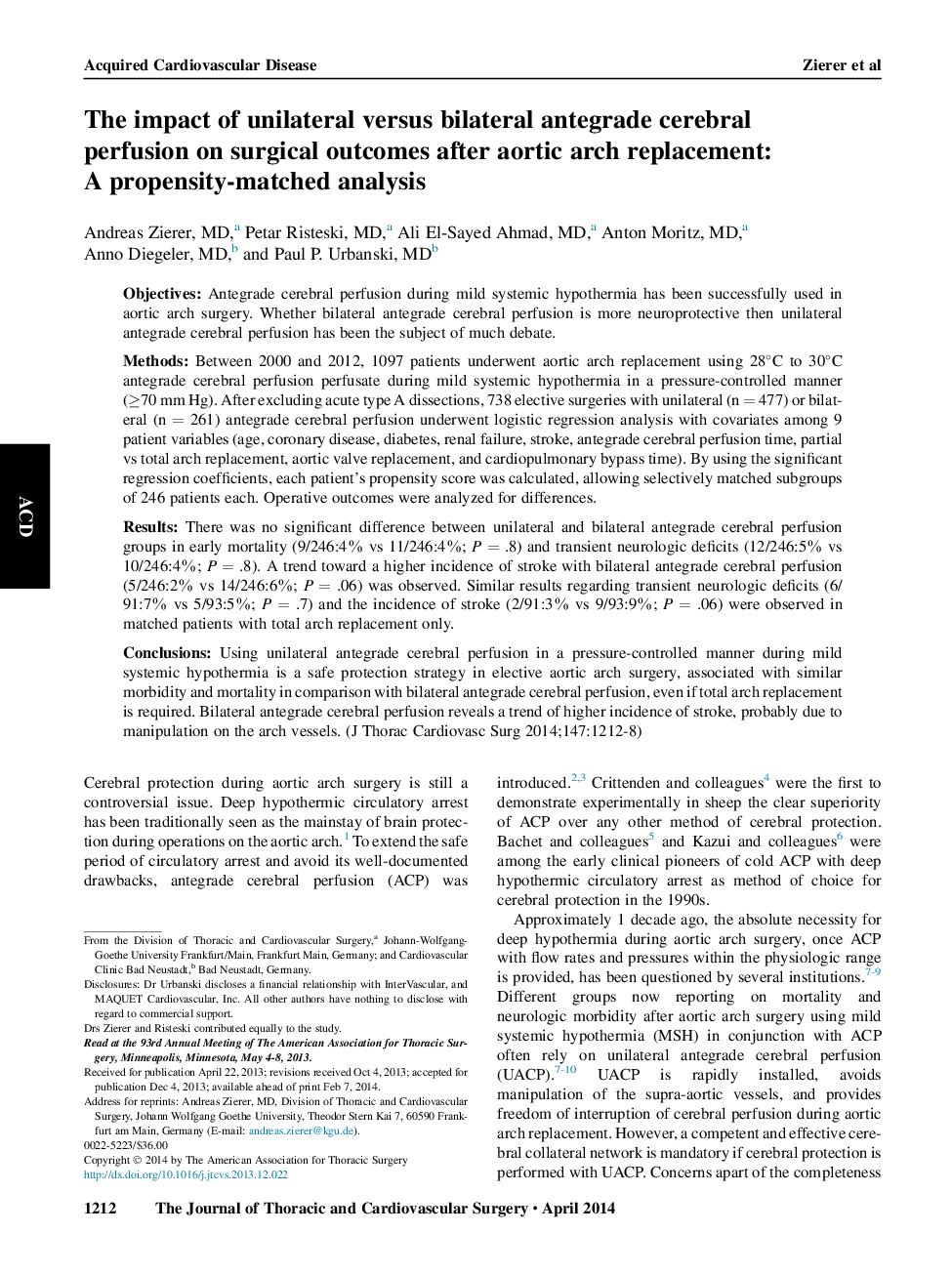| کد مقاله | کد نشریه | سال انتشار | مقاله انگلیسی | نسخه تمام متن |
|---|---|---|---|---|
| 2979729 | 1578612 | 2014 | 7 صفحه PDF | دانلود رایگان |
ObjectivesAntegrade cerebral perfusion during mild systemic hypothermia has been successfully used in aortic arch surgery. Whether bilateral antegrade cerebral perfusion is more neuroprotective then unilateral antegrade cerebral perfusion has been the subject of much debate.MethodsBetween 2000 and 2012, 1097 patients underwent aortic arch replacement using 28°C to 30°C antegrade cerebral perfusion perfusate during mild systemic hypothermia in a pressure-controlled manner (≥70 mm Hg). After excluding acute type A dissections, 738 elective surgeries with unilateral (n = 477) or bilateral (n = 261) antegrade cerebral perfusion underwent logistic regression analysis with covariates among 9 patient variables (age, coronary disease, diabetes, renal failure, stroke, antegrade cerebral perfusion time, partial vs total arch replacement, aortic valve replacement, and cardiopulmonary bypass time). By using the significant regression coefficients, each patient's propensity score was calculated, allowing selectively matched subgroups of 246 patients each. Operative outcomes were analyzed for differences.ResultsThere was no significant difference between unilateral and bilateral antegrade cerebral perfusion groups in early mortality (9/246:4% vs 11/246:4%; P = .8) and transient neurologic deficits (12/246:5% vs 10/246:4%; P = .8). A trend toward a higher incidence of stroke with bilateral antegrade cerebral perfusion (5/246:2% vs 14/246:6%; P = .06) was observed. Similar results regarding transient neurologic deficits (6/91:7% vs 5/93:5%; P = .7) and the incidence of stroke (2/91:3% vs 9/93:9%; P = .06) were observed in matched patients with total arch replacement only.ConclusionsUsing unilateral antegrade cerebral perfusion in a pressure-controlled manner during mild systemic hypothermia is a safe protection strategy in elective aortic arch surgery, associated with similar morbidity and mortality in comparison with bilateral antegrade cerebral perfusion, even if total arch replacement is required. Bilateral antegrade cerebral perfusion reveals a trend of higher incidence of stroke, probably due to manipulation on the arch vessels.
Journal: The Journal of Thoracic and Cardiovascular Surgery - Volume 147, Issue 4, April 2014, Pages 1212–1218
